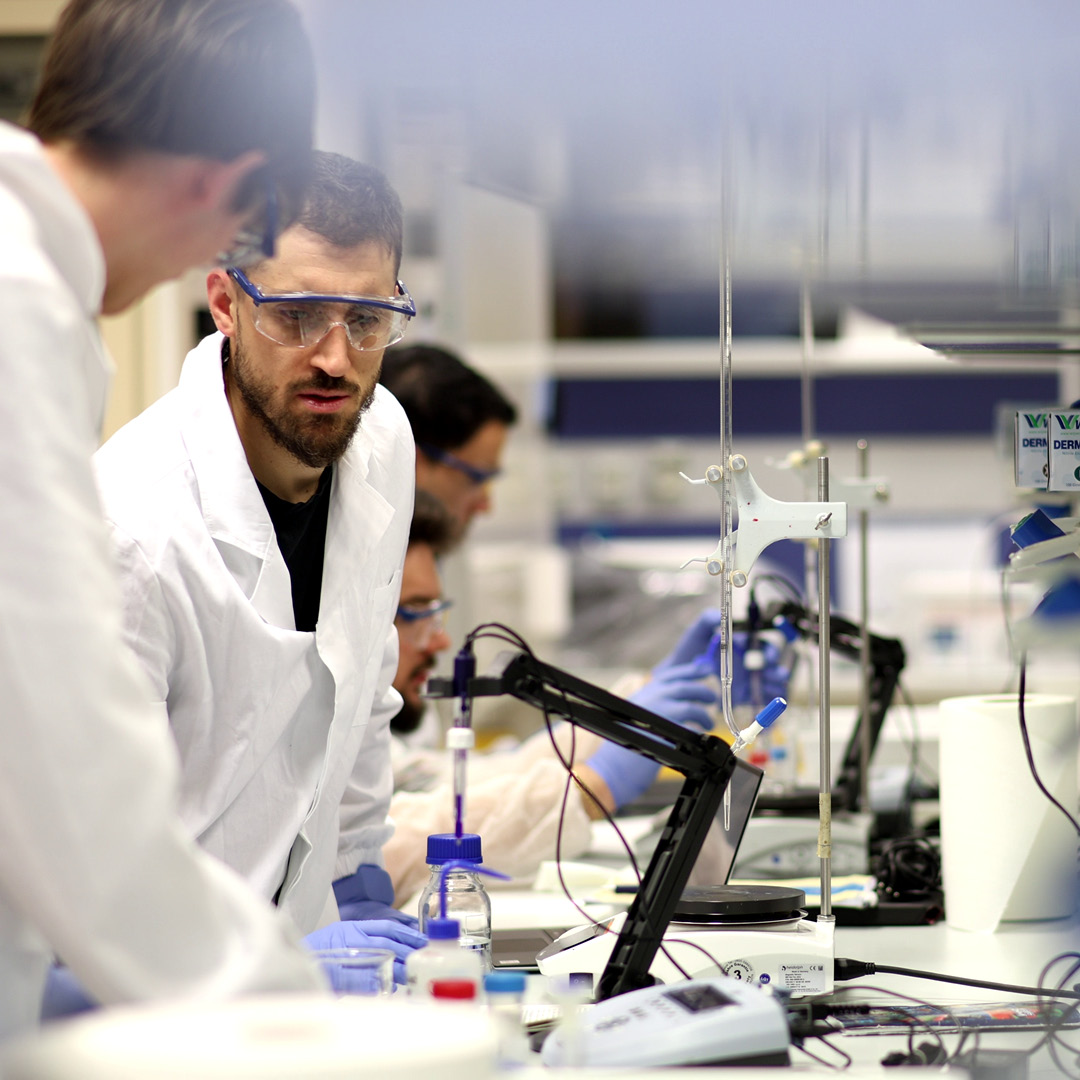

Abstract
Recent research on phenolic compounds in South Tyrol wines highlights their potential health benefits, including reducing oxidative stress and inflammation. More recently, these compounds have been proposed as important molecules for combating neurodegenerative diseases like Huntington's disease (HD). HD is marked by amyloid aggregation, causing severe cognitive and motor impairments, and remains incurable. Studies suggest that HD progression is driven by small oligomeric intermediates that affect synaptic transmission, with large insoluble deposits acting as reservoirs.
Solution NMR spectroscopy has emerged as a powerful tool for investigating these transient and low populated states. My work involves using NMR to build a kinetic model of the early aggregation stages of the huntingtin protein (httex1), which is critical in HD. The model reveals two branches of oligomerization: an "on-pathway" forming tetrameric bundles and an "off-pathway" leading to nonproductive dimers. Our quantitative NMR analysis shows that httex1 aggregation involves fourth-order primary nucleation and first-order secondary nucleation. This approach can be applied to other amyloid-forming proteins and represents a starting point for developing kinetic models to study polyphenolic compounds as aggregation inhibitors.
References
1. Ceccon A., Tugarinov V, Torricella F, Clore GM. Quantitative NMR analysis of the kinetics of prenucleation oligomerization and aggregation of pathogenic huntingtin exon-1 protein. Proc Natl Acad Sci U S A. 2022 Jul 19;119(29):e2207690119. doi: 10.1073/pnas.2207690119.
2. Ceccon A., Tugarinov V, Clore GM. Quantitative exchange NMR-based analysis of Huntingtin-SH3 interactions suggests an allosteric mechanism of inhibition of Huntingtin Aggregation. J. Am. Chem. Soc. 2021 Jun 17; doi: 10.1021/jacs.1c04786
3. Ceccon A., Tugarinov V., Ghirlando R., Clore GM. Abrogation of pre-nucleation, transient oligomerization of the Huntington exon-1 protein by human profilin-I. Proc Natl Acad Sci U S A. 2020 Mar 17;117(11):5844-5852. doi:10.1073/pnas.1922264117. Epub 2020 Mar 3. PubMed PMID: 32127471.